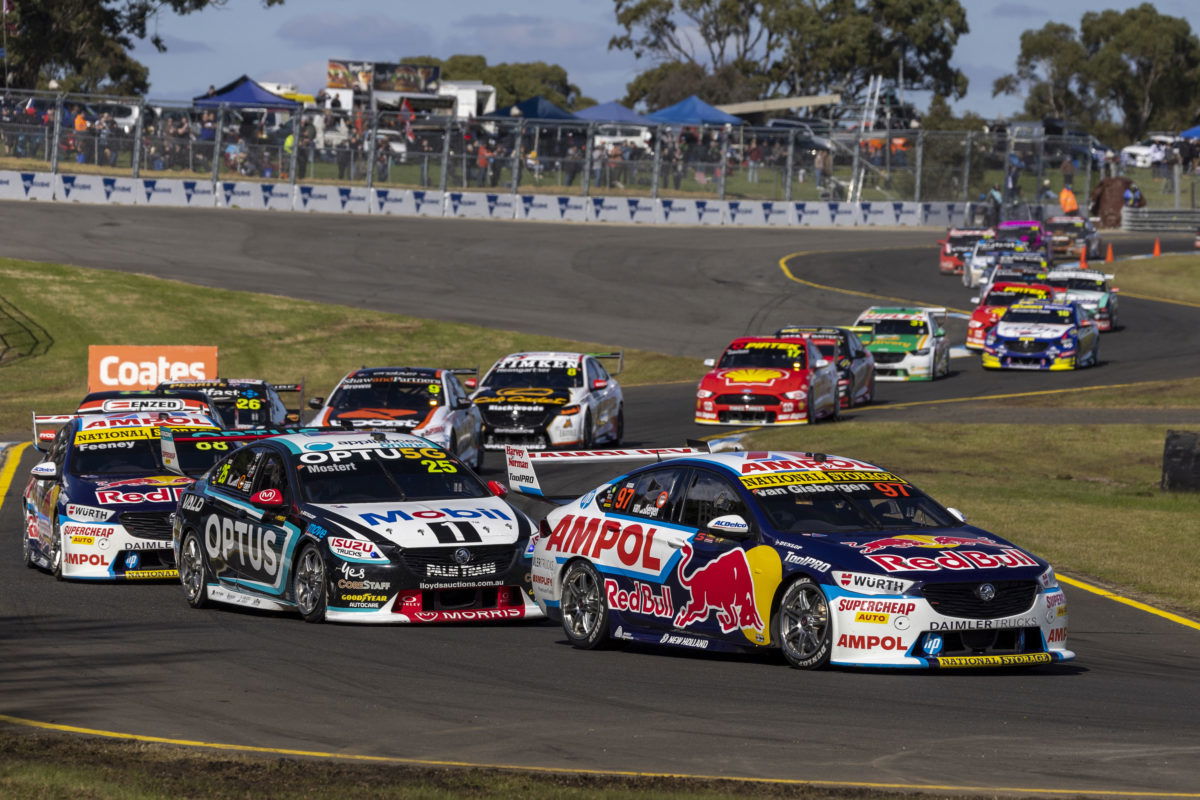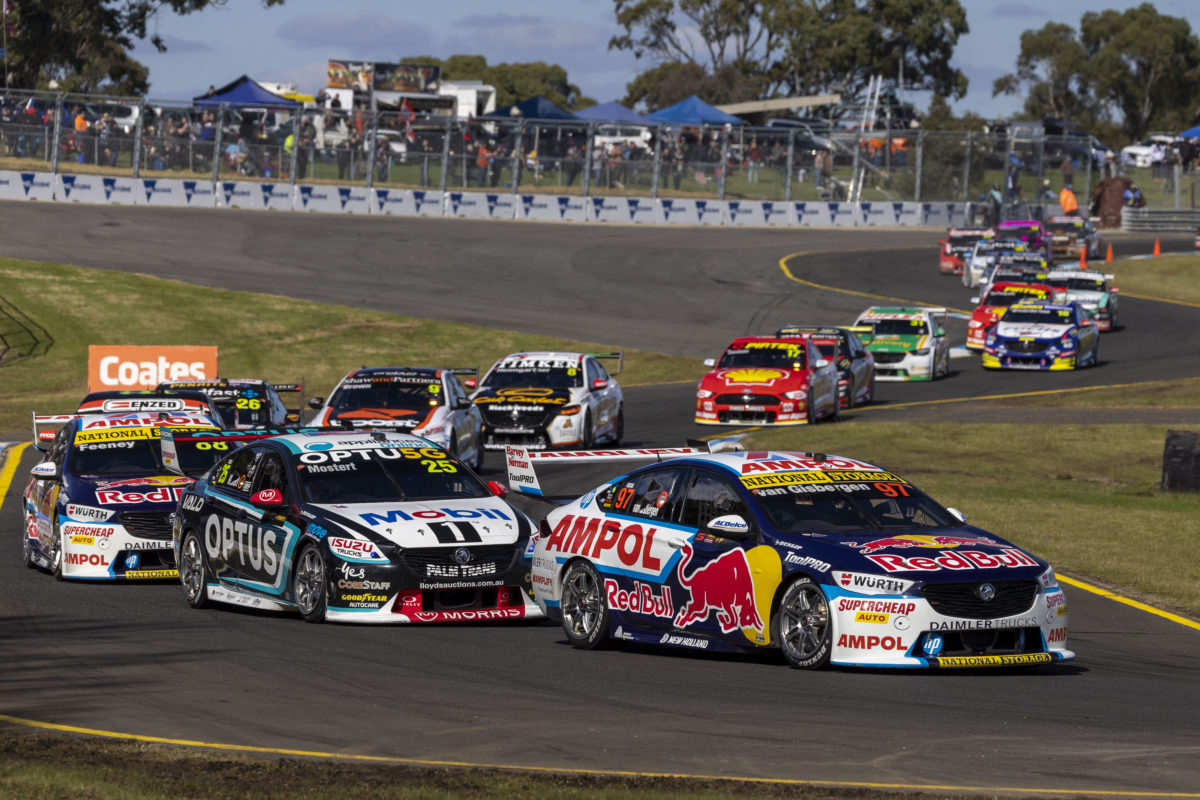

Intrigue remains over a key rule for the first Sandown 500 and Bathurst 1000 of the Gen3 Supercars era.
As yet, a compulsory pit stop requirement has not been announced for either of the enduros, the first of which will take place next month.
Supercars introduced a minimum CPS count in 2013, the first year of the Car of the Future era, as a means of paritising for fuel economy given the introduction of new engine architectures alongside the incumbent Ford and Holden (Chevrolet) pushrods.
Cars had to stop at least three times during the 2019 Sandown 500, the last time that race was run, although all three podium finishers pitted four times that year.
At Mount Panorama, seven stops had been the minimum for the decade from 2013 to last year, notwithstanding that the field was again populated exclusively by 5.0-litre pushrod-powered Mustangs and ZB Commodores from 2020, and notwithstanding also that it was possible to stretch a stint to 23 laps, which is exactly one-seventh of a Repco Bathurst 1000.
Now, while supplementary regulations have been released for the 2023 Penrite Oil Sandown 500, they read, with respect to format, “At this Event, the CPS minimum requirements ‘No.’ will be specified in the Further Supplementary Regulations.”
Any number of factors suggest that, at least for Mount Panorama, the minimum CPS quantity will be reduced, and that could have a dramatic effect on the rhythm of the Bathurst 1000.
Speaking before the Sandown supplementary regulations were issued, Tickford Racing Team Principal Tim Edwards told Speedcafe, “We’re more economical, and we’ve got a bigger fuel tank.
“But, we’re still faced with the unknown of exact fuel consumption that the cars are using.
“These pit stops that we’ve been doing, we’re putting 10 seconds’ [worth] of fuel in.
“It’s not until you get to Sandown or Bathurst, where you’re putting a full tank of fuel in, that you get a much better read.
“I’m just giving you round numbers [as an example]; ‘Okay, he can do 200km on one tank; okay, he can only do 193 on a tank.’ We don’t actually know that.
“They’ve got a good idea, and I think there’s a fair chance, in the future, we might be able to drop having that mandated number of stops.
“But, I think it’s too early in Gen3’s life to actually do that.”
To Edwards’ point, the Gen3 Mustangs are powered by a 5.4-litre quad-cam engines whereas the Camaros have a 5.7-litre pushrod under the bonnet.
As he also noted, a fill from empty to full has not been necessary in the five refuelling races held so far in 2023, given the mandated drop has been a figure, in number of litres, which is less than the capacity of a Gen3-spec fuel cell.
However, fuel cells are now 133 litres in capacity as compared to the 111 litres of a COTF/Gen2 vehicle, a 20 percent increase.
All other things being equal, fuel range is already approximately 20 percent longer and hence the Bathurst CPS requirement could conceivably be reduced at least to six.
Furthermore, though, Gen3 Supercars have less downforce and hence less drag than their predecessors, and also weigh less, factors which enable better fuel economy.
Other influences include the properties of the new-for-2023 E75 fuel, noting that the introduction of E85 in 2009 led to a blowout in fuel consumption, and the traits of the engines themselves.
Supercars would also have to factor in what discrepancy in economy there may be between the Mustang and Camaro, if indeed it is material, and whether a ‘safety margin’ thus needs to be built into the CPS requirement.
However, as the most recent event of the season at Sydney Motorsport Park demonstrated, fuel may well not be the only governing factor with respect to stint length.
The Gen3 Supercars tend to be harder on tyres given how much less planted they are than the Gen2 vehicles were and, in a first for each event, the Sandown 500 will be run on the super soft compound while the Bathurst 1000 will be run on the soft (notwithstanding that the hard was referred to as ‘soft’ and the soft as ‘super soft’ as recently as 2019).
Meanwhile, the CPS rule has been tweaked for next week’s event at The Bend.
The window now opens after a car commences Lap 3 on the race track, rather than the usual Lap 5 for a sprint race.
The ‘International’ layout which Supercars uses at The Bend is 4.95km long, meaning the window opens at around the same time as at other, shorter circuits on the calendar in terms of distance in kilometres.
As usual, the opening of the window will be moved if there is an early Safety Car period.
It is not entirely unprecedented, however, with that stipulation having also been in place back in 2019, when Sandown last hosted an enduro, given driver changes and refuelling are both undertaken from the right-hand side at the Melbourne circuit.
The OTR SuperSprint takes place at The Bend on August 18-20, with the Sandown 500 scheduled for September 15-17.



















Discussion about this post